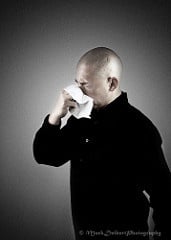How to Control Pollutants in Your Commercial Building
Indoor air is commonly twice to five times as polluted as outdoor air, and indoor pollution levels can sometimes be as much as 100 times greater than outdoor levels, according to the U.S. Environmental Protection Agency. Given the amount of indoor pollution, and the amount of time most people spend indoors, it’s wise to find ways to control pollutants in your commercial building to improve the comfort and health of employees and customers. Here are some effective ways you can control pollutants throughout your commercial establishment.
Common Types of Pollutants
There are two common types of pollutants you are likely to encounter in a commercial building:
- Particulates, which include tiny particles of material such as dust, fibers, wood, paper, and other solids. These particulates are suspended in the building’s indoor air and can easily be inhaled.
- Gaseous pollutants, which include fumes, odors, gases, smoke, and other non-solids. This can even include colognes and perfumes worn by other employees.
Both types of pollutants can cause irritation to eyes, noses, and throats; can trigger allergy or asthma attacks; and can generally cause the indoor environment to be unpleasant.
Depending on the type of business conducted in the building, the levels of these types of pollutants can be higher or lower. A restaurant, for example, is likely to have more smoke and food odors than an insurance company office. Any types of commercial activities that involve sanding, welding, cutting, or similar tasks can generate substantially more particulates than administrative activities.
Methods to Control Pollutants
- Increase ventilation — An effective and inexpensive way to control pollutants is to increase the amount of ventilation in your commercial building. Open doors and windows to let in more fresh air while getting rid of stale, polluted indoor air. Adding fans to the mix, including ceiling fans and fans set in windows, can increase the amount of fresh air coming into and circulating inside the building. When outdoor temperatures make it impractical to open doors and windows, you may want to rely on a whole-building ventilation system, such as an energy-recovery ventilator. These devices pull in fresh air while venting stale air, but they do so in a way that recovers some of the energy in the exhausted air. For example, incoming cool air can be warmed by heat in the outgoing exhaust air. In this way, you don’t waste a large amount of money and energy conditioning incoming ventilation air.
- Practice source control — Source control helps stop pollutants at their source, preventing odors, fumes, particulates, and other irritants from developing to the point of being a nuisance. Make sure trash and waste material is removed from the building frequently — daily, if possible. Clean and dust shelves, desks, and other surfaces weekly. Vacuum carpets and rugs every week. Establish standards for the wearing of colognes and perfumes, for heating or cooking food in employee break rooms, and for the use of cleaners or air fresheners. Enforce smoking regulations and if you do provide a smoking area, make sure it is sufficiently removed from the indoor spaces. Use low-odor cleaning materials where possible.
- Call for HVAC system maintenance — Contact your HVAC professional for HVAC maintenance. Not only will regular preventive maintenance keep your heating and cooling equipment working properly, it will also ensure that the system produces fewer pollutants. Make sure the air filters in the HVAC system are changed during maintenance and that a regular schedule of filter checks and changes is established. Inspect ductwork to ensure no gaps or holes that can cause air leaks and that allow pollutants into the ducts where they are then blown into your indoor spaces.
Our goal is to help educate our customers about Plumbing, HVACR, Fire Protection, and Alarm Systems in Mechanical, Commercial, and Residential settings. For more information on how to control pollutants in your commercial building, and to view projects we’ve worked on, visit our website!
Photo Credit: MarkDeibertPhotography via Compfight cc








